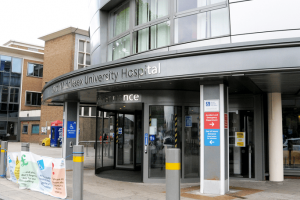Researchers are working to create a national clinical research network of electronic health records that could be the largest to date, the Washington Post reports.
Background
The network development is being overseen and run by the Patient-Centered Outcomes Research Institute, which was created under the Affordable Care Act (Eunjung Cha, Washington Post, 4/15).
In December 2013, PCORI approved $93.5 million in funding to build a national clinical research data network to improve comparative effectiveness research.
During a Dec. 17, 2013, meeting, the PCORI board of governors approved $191 million to fund 82 comparative research projects, including the clinical research network project (iHealthBeat, 12/19/13).
About the Database
PCORI Executive Director Joe Selby called the proposed patient record network the “holy grail” of health care research, noting, “We will be able to get answers with a degree of certainty that we’ve never had before.”
According to the Post, the network aims to serve as a “giant repository of medical information” and could include data from 26 million to 30 million U.S. residents by September 2015.
The network will include 11 sub-networks that each will contain patient medical records over the past few years from:
- Academic research centers;
- Community health clinics;
- Hospitals;
- Insurers; and
- Other sources.
The type of data being collected will include:
- Blood test results;
- Diagnoses and conditions;
- Genetic sample links;
- MRI results;
- Surgeries;
- Vital signs; and
- X-ray results.
According to the Post, each participating organization will retain the right to approve or deny a research proposal and will aggregate any shared data to remove patient identifiers.
Devon McGraw, head of the data privacy task force for PCORI, said, “The raw data [are] not what is being shared. That remains with the institution that the patient trusts.”
Challenges Remain
Researchers say several obstacles must be overcome before the network can realize its full potential, including:
- Connecting computer systems;
- Determining which research questions to prioritize;
- Determining who will be granted access to the records; and
- Identifying how FDA will view such research when evaluating new drug applications and recalls.
Meanwhile, participating organizations do not intend to explicitly tell patients that their data could be used in the network, which privacy experts say is legal provided patients sign a general consent form when they receive treatment.
Researchers on the project noted that patient panels have been included in every step of the project to get feedback on both health information privacy and research questions (Washington Post, 4/15). Source




























